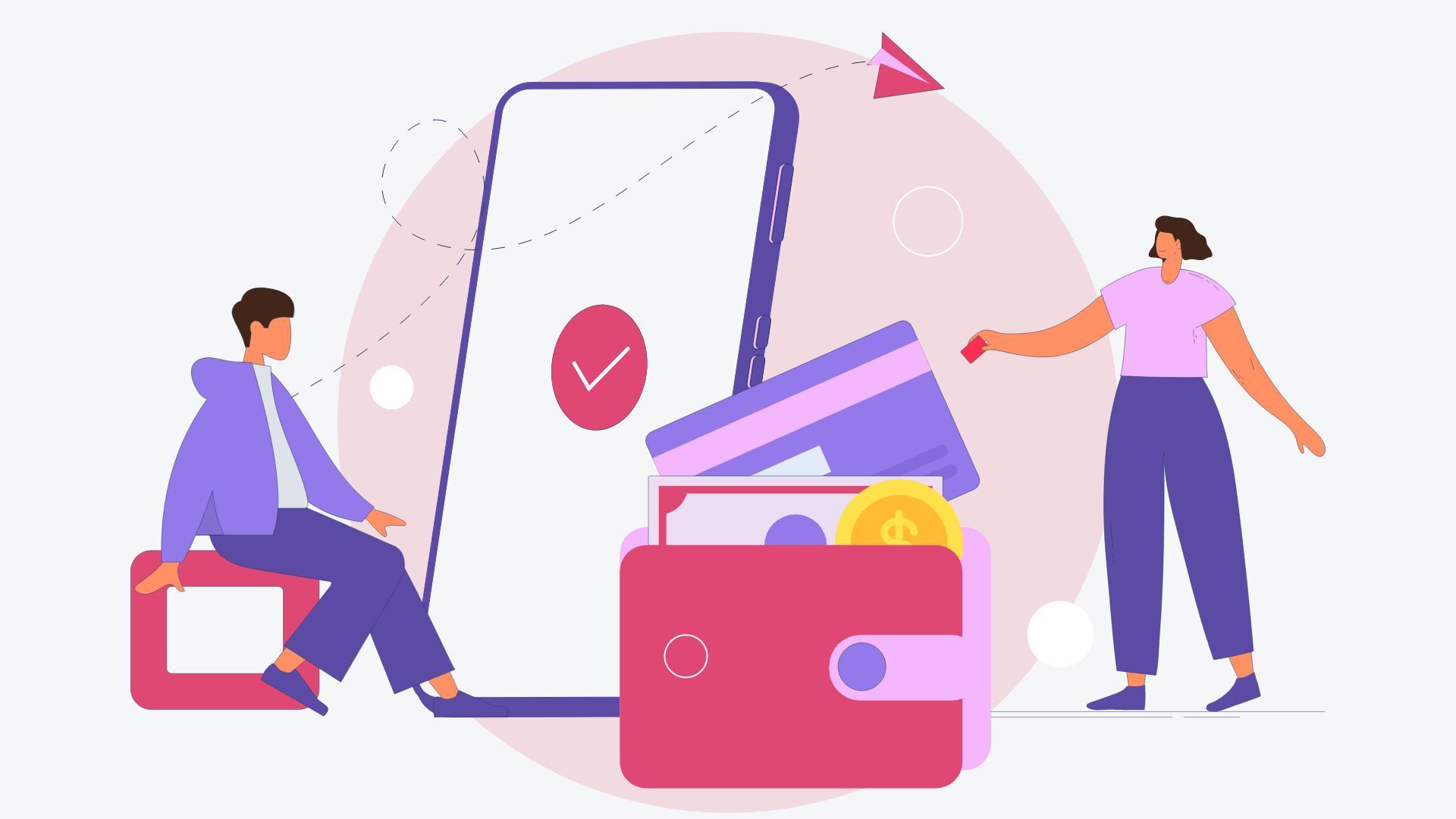

How often do you make an online payment? Do you find it comfortable? 82% of Americans already use digital payments (both browser-based and in-app transactions), exceeding 78% for 2021 and a tendency to reach 100% in coming years.
Mobile payments are the future, and there is a strong tendency for people to move to a cashless world. To keep your business competitive, it should definitely have an online payment system; otherwise, it will be a drawback for the customer to interact with your brand. If your business model doesn’t require online payments, you can still benefit from the technology by developing a mobile wallet app stuffed with practical features.
The following article will reveal the critical aspects of mobile wallet app development.
Here’s what you will learn in the article:
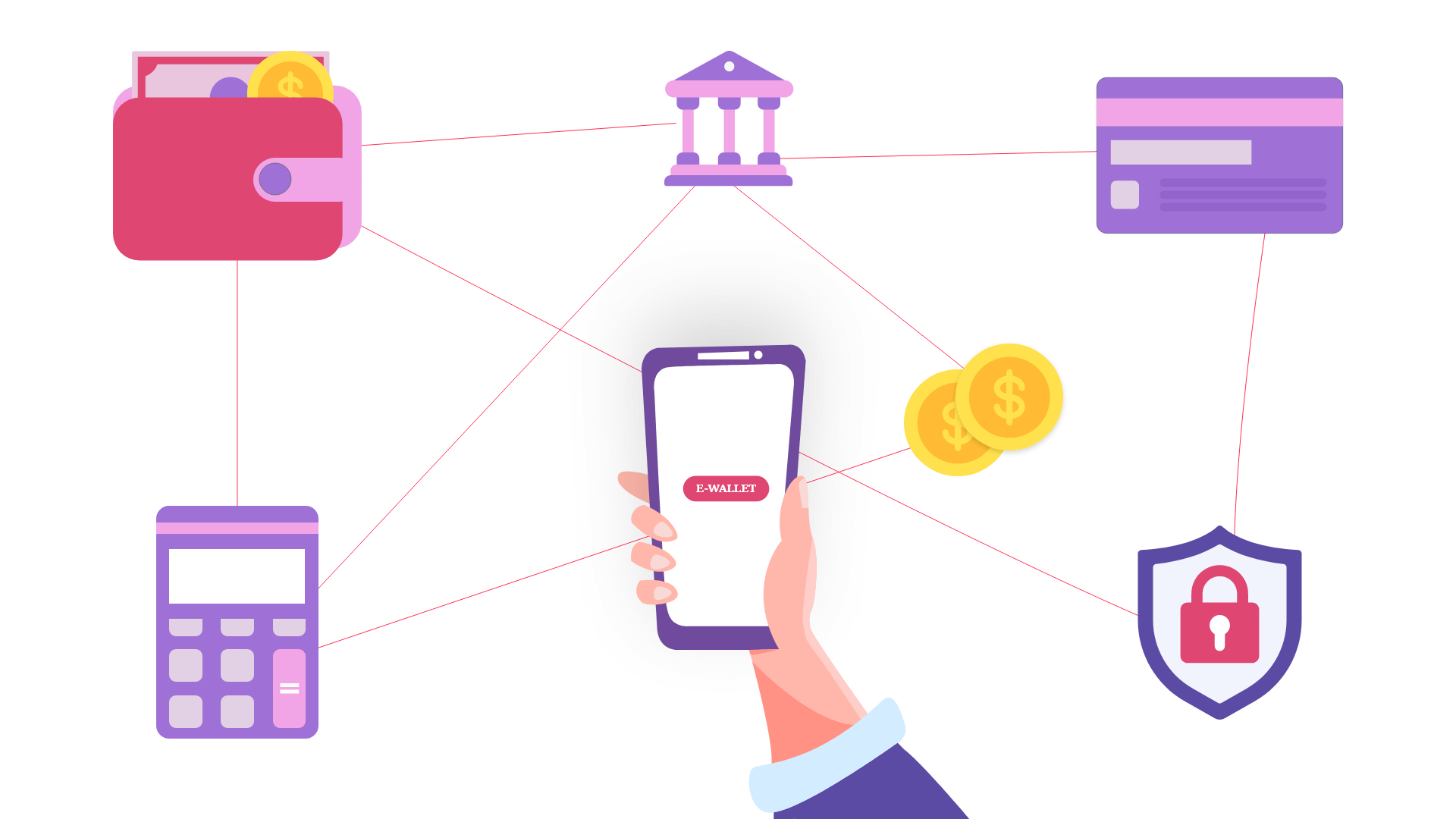
So, what is a mobile wallet?
Mobile wallets are digital wallets that store payment and card information on mobile devices. They offer an innovative way for online payments. Users don’t need to have credit cards to make payments. All they need is a smartphone connected to the internet.
Not sure why it’s worth creating a digital wallet app in 2024?
The below statistics will dispel any doubts:
As you can see, there is no doubt that the number of mobile payments will only grow in the following years. There are a lot of successful payment mobile wallets on the market, and we’ll review the most outstanding ones in the next chapter.
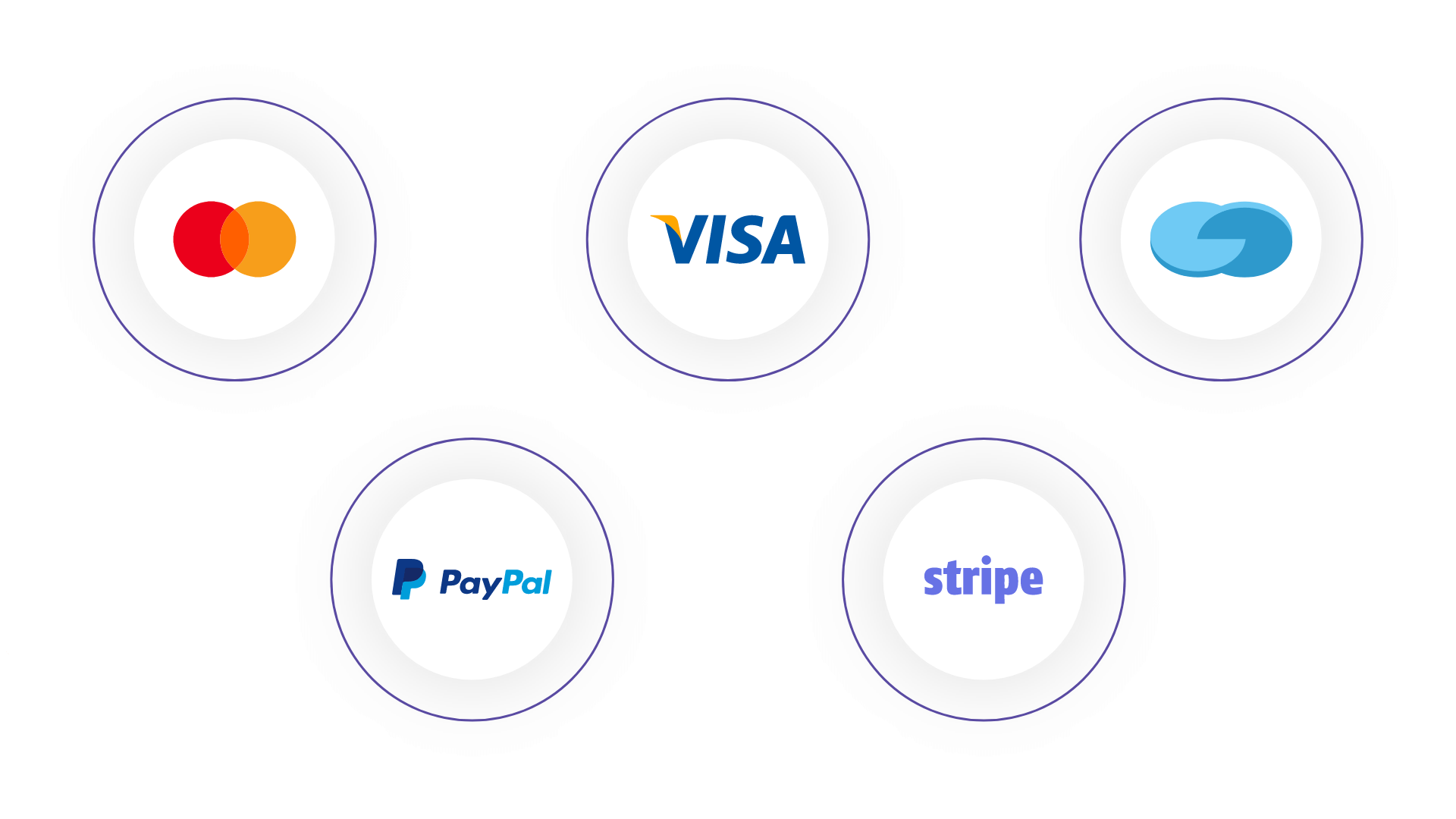
As a part of learning how to make a mobile wallet app, let’s find inspiration by looking at some of the best mobile wallet apps on the market.
Google allows its mobile operating system, Android users, to leave their wallets at home and pay for purchases with mobile phones. This digital wallet allows connecting different cards, such as MasterCard, Visa, American Express, and others worldwide. The app is available across different operating systems, including Android and iOS. Today, there are over 100 million active users of Google Pay.
This digital wallet app is created by the famous Apple company. The solution allows to add different types of payment cards and make online and mobile payments through the Apple Pay payment system. This application is available only for the Apple ecosystem – iOS, watchOS, and macOS. Already in 2024 Apple Pay had 507 million users.
PayPal is leading the game with its payment solutions counting over 430 million worldwide. The One-Touch application allows making online payments and payments in offline locations using a smartphone. It’s available for both Android and iOS.
If you are looking for a giant in mobile payment apps, look no further. Alipay is the largest payment app globally created by the Alibaba Group. There are over a billion users worldwide that use this system every day.
Get in touch with the Addevice team to discuss your requirements.
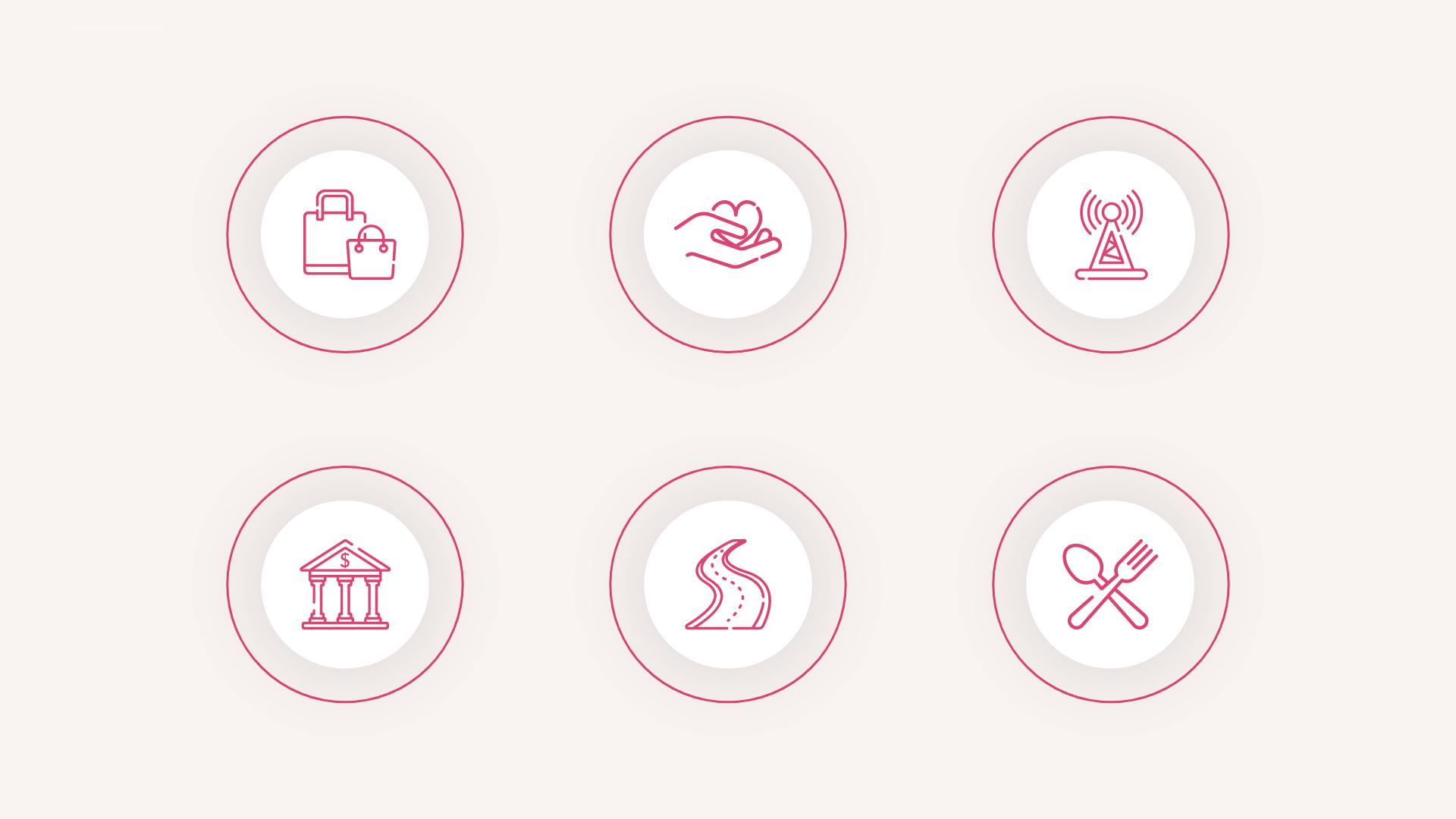
Mobile wallet development conceals the potential to change how industries operate. Explore the list below to find out how you can benefit from it.
This year, global ecommerce sales will exceed $5 trillion, with predictions to surpass $7 trillion by 2025.
Digital wallet apps in retail can store information about all purchases made by a customer and help them manage payments, bonuses, loyalty cards, coupons, etc.
Check the guide.
The healthcare services industry can also take advantage of mobile wallet apps by allowing them to pay bills for medical services.
Check the guide.
Mobile wallet apps are quite popular among telecommunication companies. You can pay a bill, recharge your phone number or even a third-part number, receive and send payments. As a result, users can recharge their accounts right inside telecommunication providers’ applications.
Banking and financial institutions benefit from mobile wallet apps the most. Such applications store debit and credit card information and allow users to make secure mobile payments right in the app.
Businesses operating in transportation and logistics can allow their clients to pay for services right through apps. For example, Uber allows users online payments. You can integrate various payment gateways to make the app more convenient for users.
The food and grocery industry can also benefit from mobile wallet app development. Booking and paying for a restaurant, ordering food, and online purchasing movie tickets are just a few examples of how businesses from these spheres can use mobile wallets.
Learn in the guide.
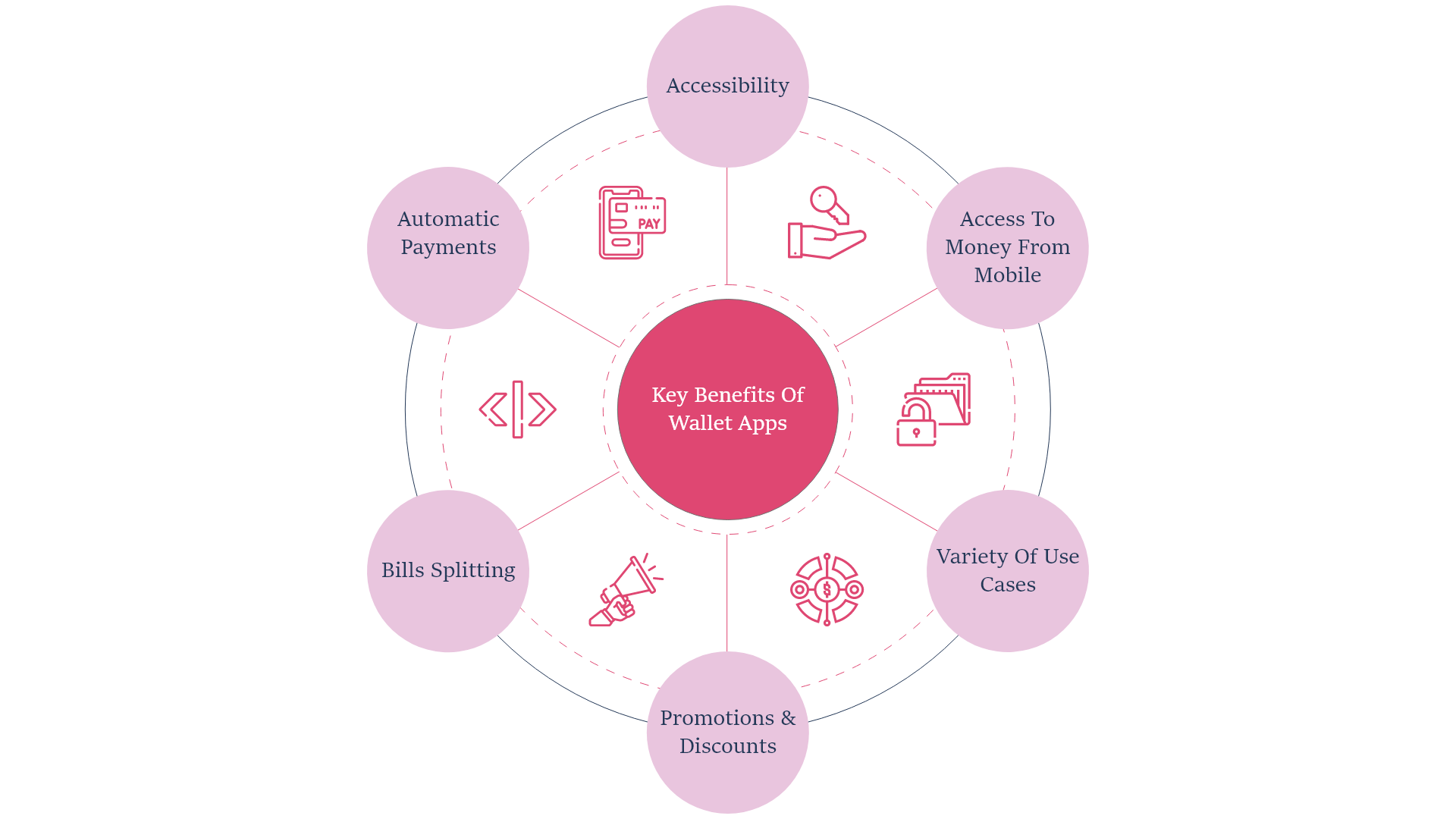
Why should you develop a mobile wallet app?
Such applications can deliver many benefits to businesses in every industry.
Mobile wallets allow making day-to-day transactions without carrying around physical cards. All they need is an app on their smartphone and a user ID.
Users can start making mobile payments in no time. They need to connect their cards to the digital wallet and make payments with smartphones.
Mobile wallets can be used for a range of uses. Users can pay for purchases, buy tickets, pay for online services, etc.
Depending on where you are using the wallet app, you can add the functionality allowing users to split the bill and send a link to users who needs to pay them money.
You can add the ability to set up automatic payments within your app so users won’t forget about them because of their hectic everyday life.
Digital wallets usually offer different promotions and discounts. You can reward users for buying at partners’ locations, making a certain number of monthly payments, etc.
It’s time to explore how to make a mobile wallet app from a technical point of view, starting with the key types of mobile e-wallet apps.

Generally speaking, wallet apps differ based on the type of payment processing.
Explore some of the most popular types of digital wallets:
According to another definition, mobile wallet apps can be divided into three following types:
Depending on the development purpose, you might create an app that will combine a few of the technologies, allowing both mobile and NFC payments.
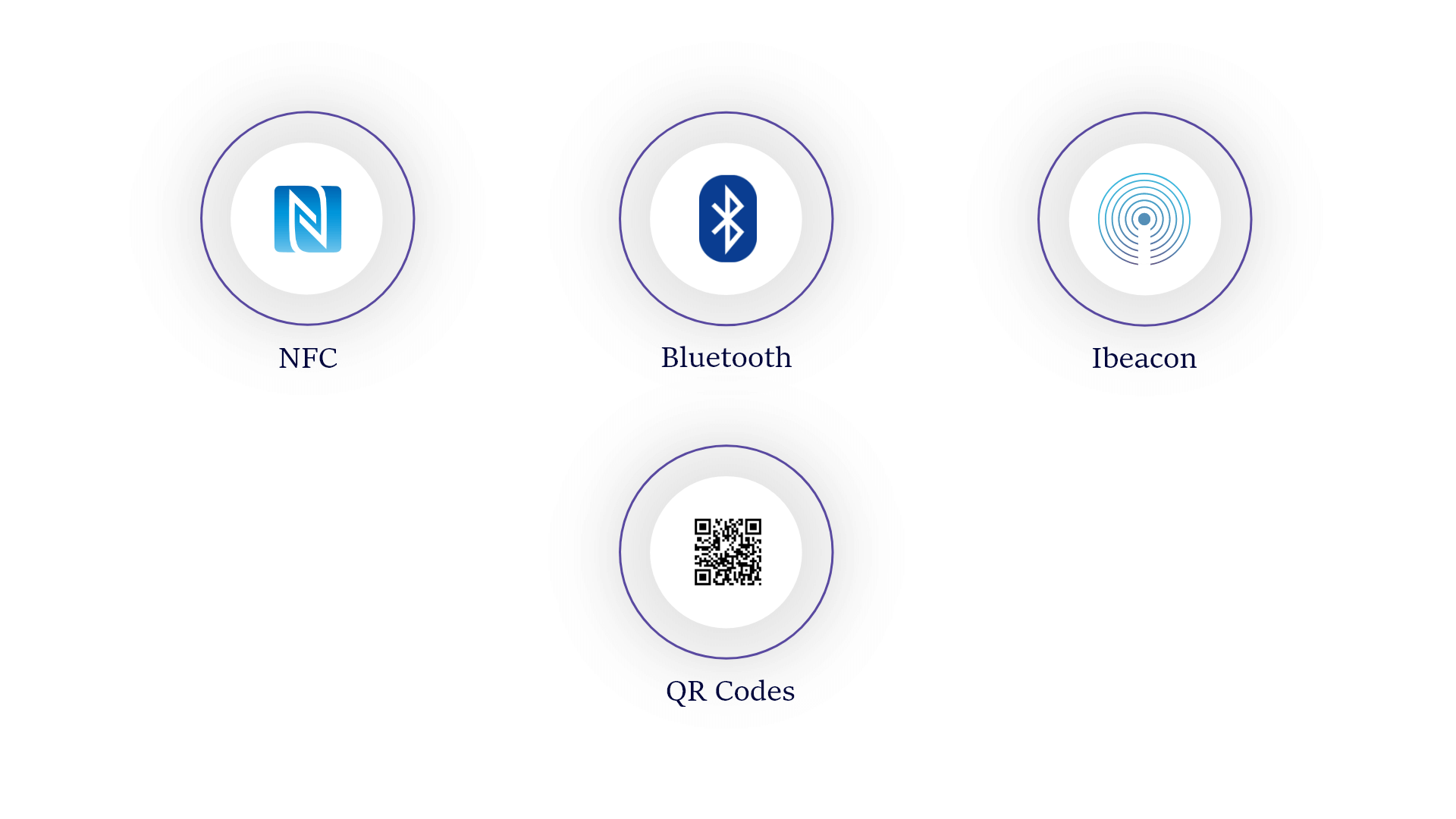
Without understanding what technology is used in similar applications, it is impossible to build an app.
Usually, mobile wallet apps use one or a combination of the following data transfer technologies:
NFC or Near Field Communication Protocol enables contactless money transfer between smartphones equipped with NFC chips and a transmitter in a POS device. NFC connects to the transmitter in a record time, less than one-tenth of a second.
NFC relies on the card emulation technique. This protocol allows storing card details in a digital form inside a mobile wallet application. During payment, the protocol transmits data to the POS terminal automatically.
iBeacon is a technology that allows for data transfer without an internet connection. Since all smartphones today are equipped with Bluetooth, they are all compatible with iBeacon.
After users activate Bluetooth, it communicates with an external BLE transmitter, also called a beacon. POS terminal receives all the necessary data stored in a mobile wallet and transfers money.
Another use case of iBeacon technology is offering personalized special offers and discounts when users come within the range of a beacon’s activity.
This type of payment is also popular. Users need to point their smartphone’s camera to a QR code, and a mobile wallet app will transmit money. This payment method usually requires a password or other user authentication technique for action confirmation.
Modern smartphones are equipped with all the necessary chips and technologies to implement mobile wallets. The camera scans QR codes, Bluetooth enables iBeacon technology, face recognition, or fingerprint scanner is used for user authentication.
What about security?
When it comes to mobile payments, users have one concern – security.
Around 40% of US consumers don’t use mobile payments because of security concerns. If you want to create an online wallet that won’t raise concerns among users, you need to use security technologies for data encryption.
Here is a list of some security technologies that you can use during mobile wallet app development:
P2PE is one of the most secure data protection methods for mobile wallet applications. The encryption process starts as soon as the user swipes the smartphone over a POS terminal. The encryption goes on when the funds are in transit and lasts till authorization.
Tokenization is a data encryption system that encrypts card information by turning it into a token – a string of random symbols.
Passwords are old but working technology. Allow users to protect their data with a password and include a rejection feature for too short and simple passwords. The use of password protection makes a mobile wallet application more secure and offers an additional layer of protection to the data stored there.
Get in touch with our team for a free preliminary consultation.
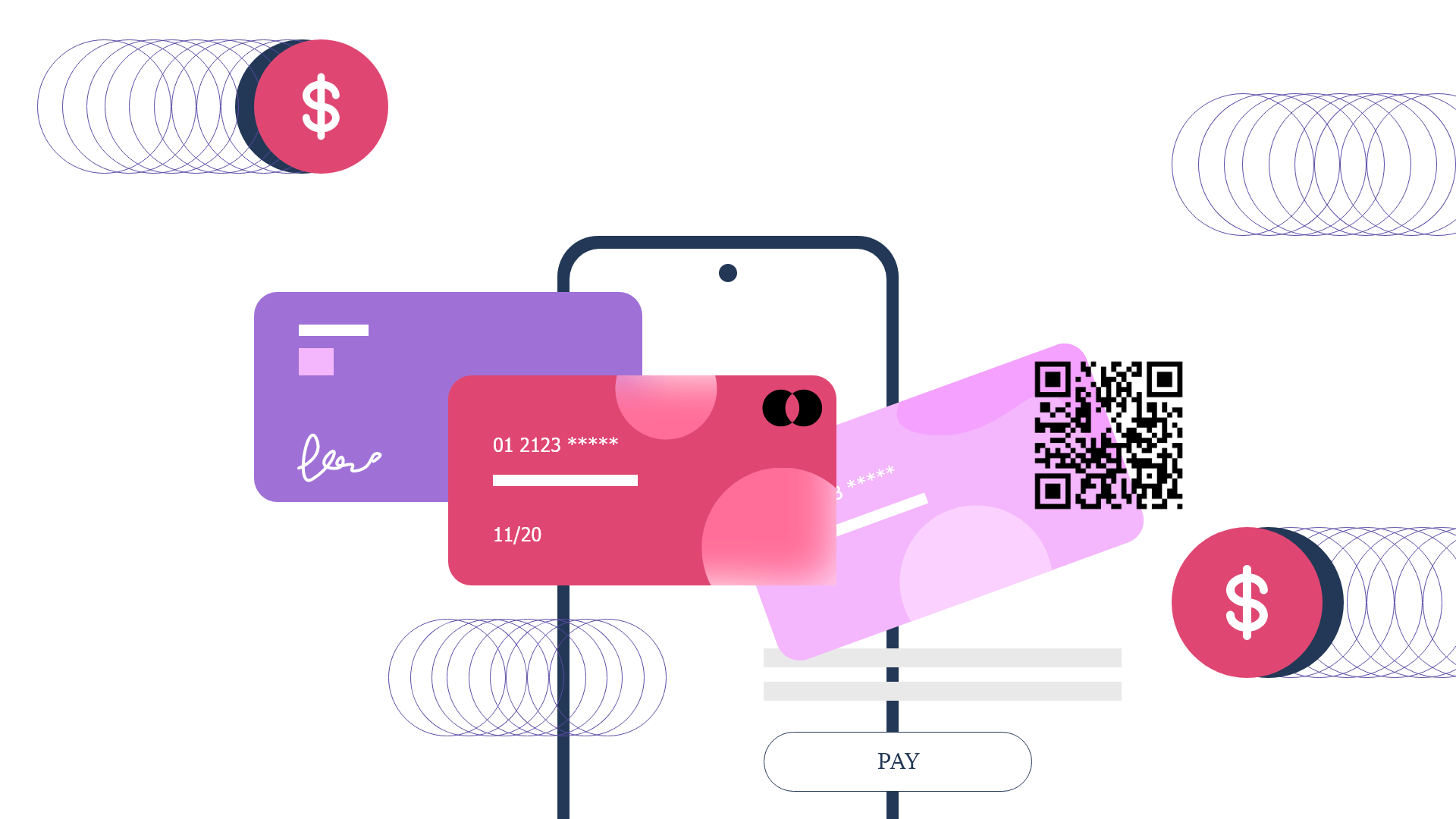
As a part of development, let’s review some of the SDKs (Software Development Kits) that you can use to streamline the development project. There are a number of payment SDKs that you can integrate into your mobile wallet. Below, we review some of the most popular ones.
If you want to build a mobile wallet app that will support the use of the Mastercard payment system, consider adding Mastercard Mobile Payment SDK to provide support for both online and in-store transactions.
Braintree is a popular SDK for mobile payment wallets that you can use with no additional fees. It’s a great choice for new and aspiring businesses.
PayPal provides SDKs to create digital wallets, such as PayPal Native Checkout SDK.
QuickPay is a popular payment system from the UK that offers a few SDKs to process online and in-store transactions. The SDKs are available for both Android and iOS. Please note that you will need to pay a fee for using these SDKs.
Stripe is one of the most popular payment gateways, especially in the eCommerce industry. It provides an SDK that you can integrate with a number of features.
Visa is also one of the payment system providers whose services are available worldwide. You might want to consider adding its support to your mobile wallet to make it available for a more considerable number of users.
These are just a few SDKs that you can use for your wallet app. Before you decide and start the development process, study the local laws and regulations. For example, in some countries, you can’t use Braintree, while in others, you can’t use PayPal.
with Addevice's Discovery Phase today

Don’t skip this section if you’re interested in creating a digital wallet. It provides examples of basic and advanced functionality that you might need to include in your application.
Let’s start with the basic features of any mobile wallet.
Aside from basic features, you might also want to consider adding some advanced functionality:
During the development of the first version of your application, you might want to include only basic functionality. This approach will allow you to validate your app idea without losing money. Advanced features might be added with further iterations.
The development of wallets for mobile devices is a process comprising different steps. Usually, development is divided into discovery and development stages.
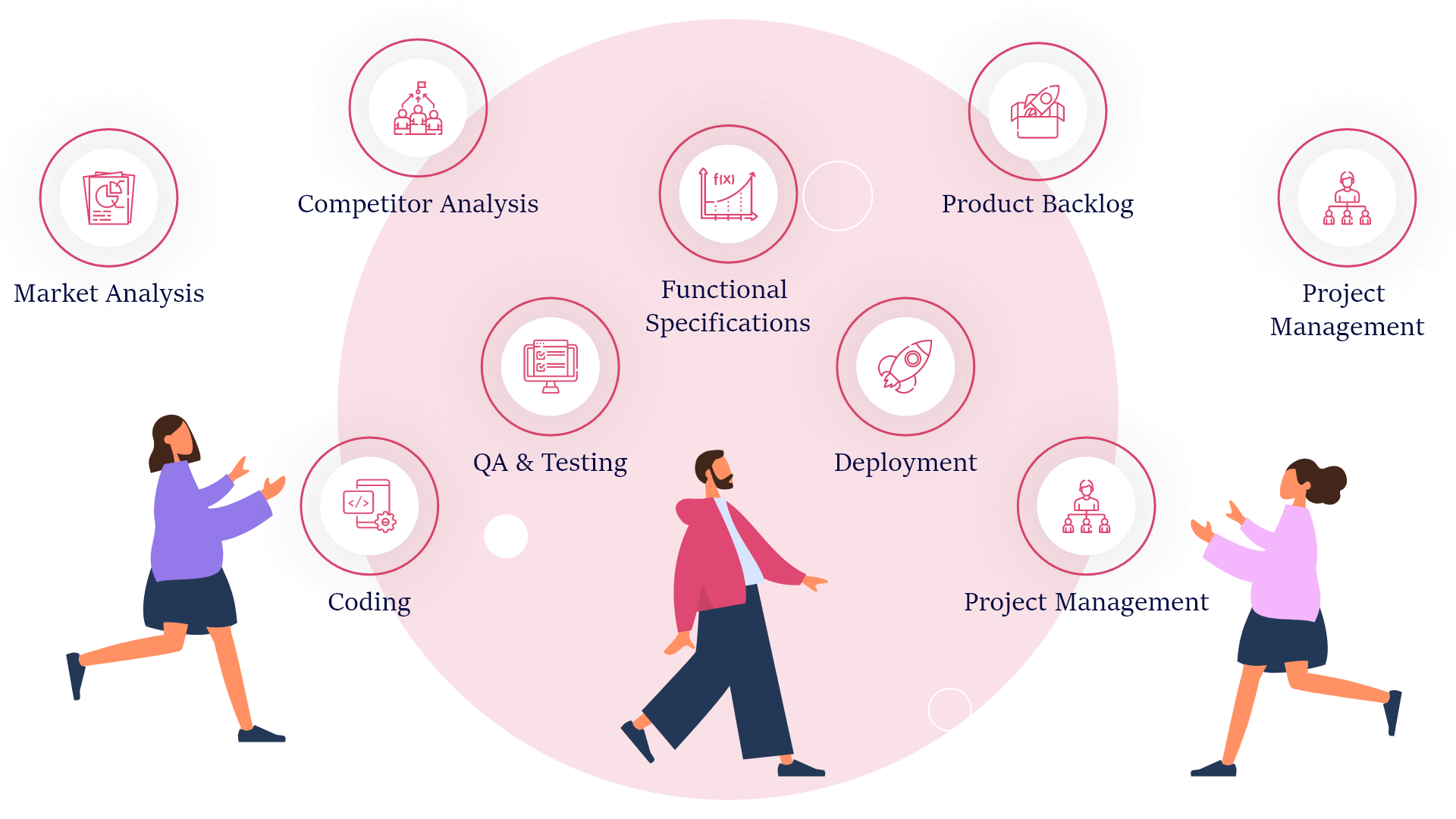
The discovery stage is an essential part of app development. During this process, companies identify their business needs, define technical requirements and match them with technologies available on the market.
You cannot skip the discovery stage if you want to create an app with a chance for success.
At the end of this stage, you will have the following documents on your hands:
The lion’s share of the discovery stage is dedicated to UX and UI design. The deliverables of this step include UX wireframes, UI mockups, branding elements, illustrations, animations, etc. During the wallet app development, you will need to identify how users will interact with your solutions and what it will look like for the end-users.
During the development stage, the coding itself happens. Developers create the code base of your application, integrate it with third-party solutions, and implement custom features.
The development stage is traditionally divided into several phrases:
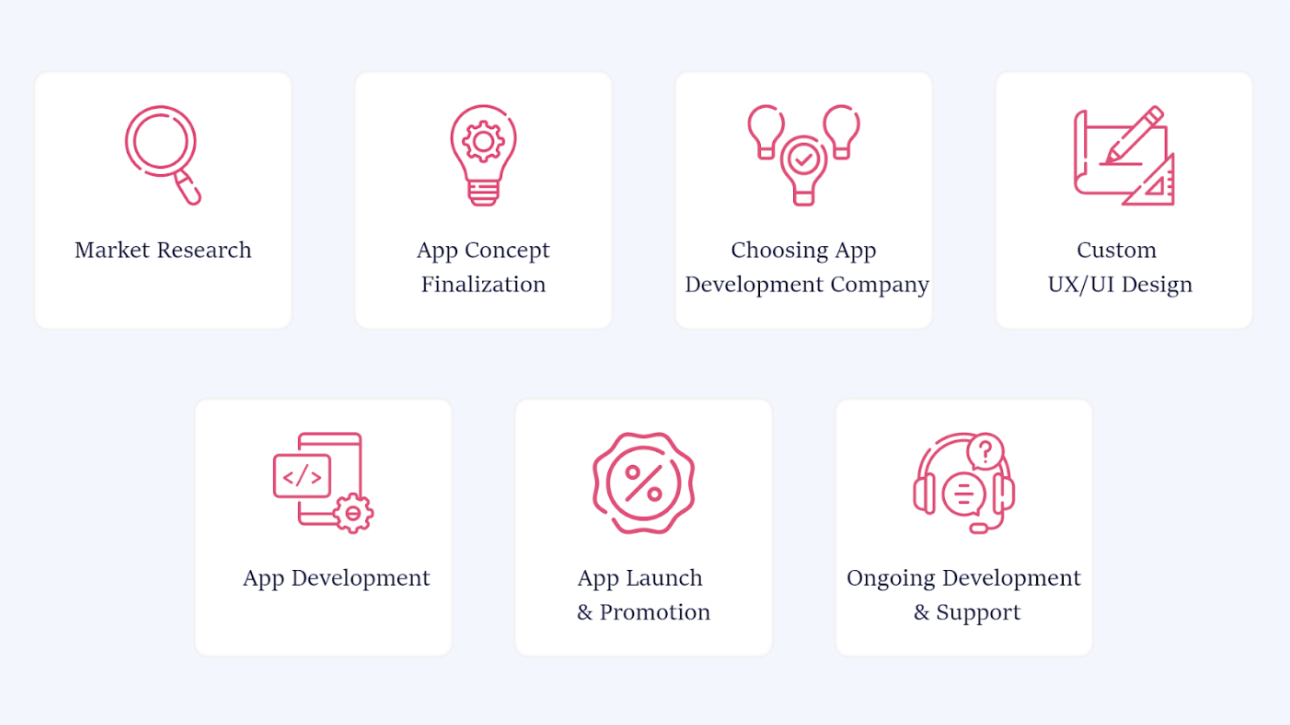
The development process of a mobile wallet starts long before coding. The project implementation is a complicated process comprising multiple stages, each having its crucial role in the whole process.
App development usually starts with market research and competitor analysis. During this stage, you need to decide for what industry you will develop an app, who your target audience is, and who your competitors are.
Market research will help you conceptualize your application and find your value proposition.
This stage is crucial for the future of your application. You need to finalize the concept of your future apps. In simple words, you need to decide on the USP (Unique Selling Proposition) and how to set your app apart from the existing competitors.
If you don’t have the necessary technical knowledge, you will need to find a development company that will create a wallet for you. Here are a few tips on how to choose a company that will become your reliable technical partner:
During the screening process, some aspects can influence future cooperation, such as the level of English knowledge, differences in time zones, cultures, etc.
Outsource App Development: How to Make It Work?
The interface creates the first impression of a mobile page. What users see first when they open a new app decides whether they will use it or abandon it right away. Thus, you need to address this part of all development with an eye for detail. The user interface should be feature-rich, user-friendly, and attractive.
Developers then turn your UX wireframes and UI mockups into a working application and implement all the necessary features.
Remember that mobile wallet applications should be created with scalability and security in mind.
After you launch the app to the market, it’s time to think about its promotion. In most cases, marketing strategy creation starts long before the app is released to the end-users.
Today, a comprehensive marketing strategy includes several parts, such as SMM, content marketing, paid ads, etc.
The development process doesn’t stop at the previous stage. If you create an app with a long-term outlook, you will need to continue working on it.
After getting the first user feedback, you might want to add some functionality, improve existing features, and plan for further updates. The process of app development is ongoing.
Mobile wallet application development is not a simple process. It consists of numerous stages that gradually take you from an app idea to the first working version.
The current market state indicates that mobile payments will grow across all industries. Today is the best time to act on the idea you have to get business benefits tomorrow.
We know how to make a mobile wallet app that will be secure and meet all your requirements.